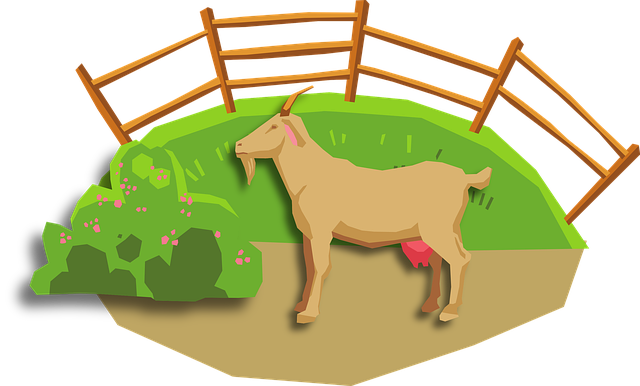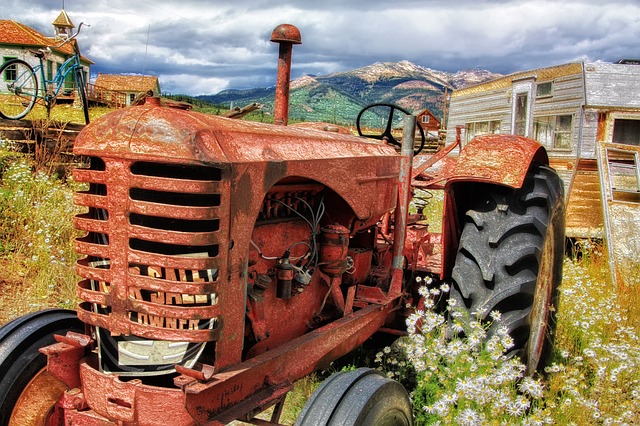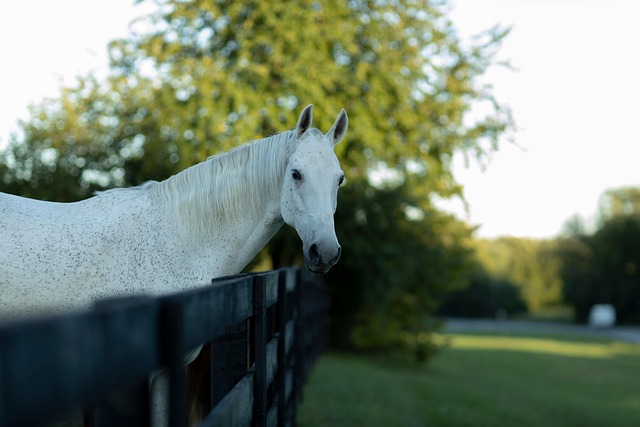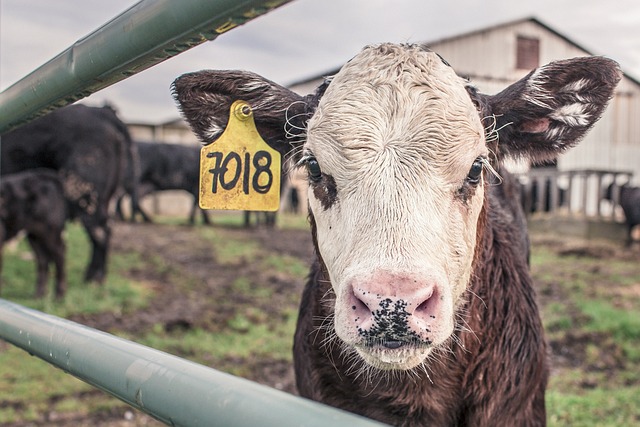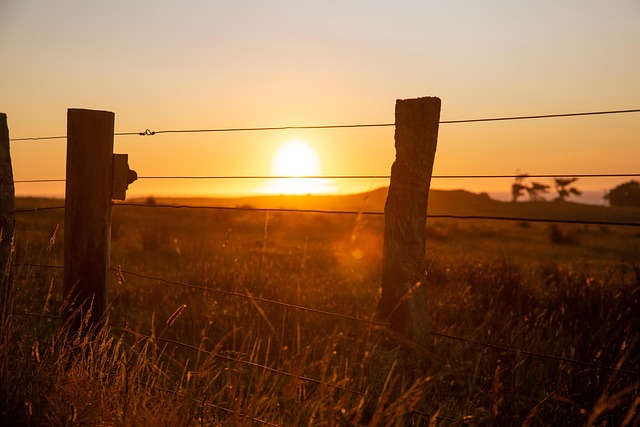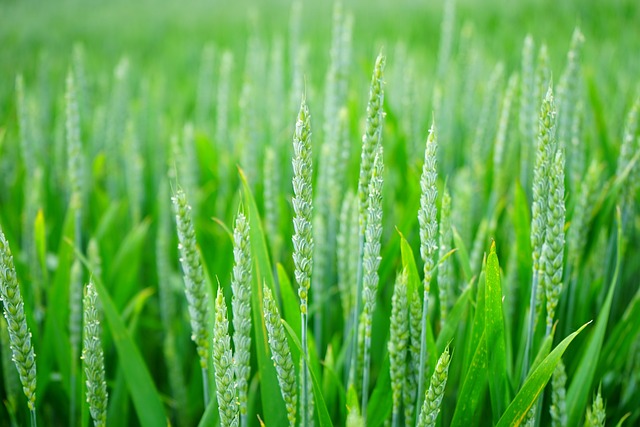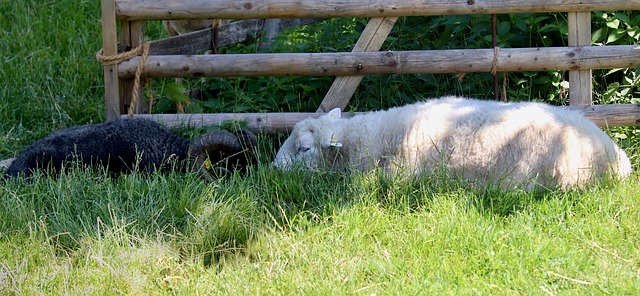Choosing the right fencing wire for agricultural purposes is vital, with options differing in streng…….
Category: Fencing Farm
Fencing Farm Keyword
Fencing Farm: A Comprehensive Exploration
Introduction
Welcome to an in-depth exploration of a revolutionary concept that is reshaping agricultural landscapes worldwide—the Fencing Farm. This innovative approach combines the art of fencing, land management, and sustainable farming practices to create efficient, productive, and aesthetically pleasing agricultural systems. In this article, we will embark on a journey through the various facets of Fencing Farm, uncovering its historical roots, global impact, economic implications, technological innovations, regulatory frameworks, and the challenges it faces. By the end, readers will gain a comprehensive understanding of this dynamic sector and its potential to shape the future of agriculture.
Understanding Fencing Farm: Unveiling the Concept
Definition
Fencing Farm, at its core, is an agricultural system characterized by the strategic use of fencing as a central design element. It involves dividing and organizing farming areas with fences, creating distinct zones for various crops, livestock, or land management purposes. This approach not only enhances structural efficiency but also promotes sustainable farming practices, biodiversity, and aesthetic appeal.
Historical Context
The practice of fencing farms has deep historical roots, dating back to ancient civilizations. In medieval Europe, for instance, estate owners used hedgerows and fences to delineate fields, manage livestock, and control access to their land. Over time, as farming techniques evolved, so did the methods of fencing. Modern advancements in materials science and engineering have led to the development of durable, efficient, and environmentally friendly fence options, such as high-tensile steel, polyvinyl chloride (PVC), and natural materials like wood and hedging plants.
Core Components
A Fencing Farm typically comprises several key components:
-
Fencing Materials: The choice of fencing material is critical to the overall success of the farm. Common options include metal mesh, wooden posts with wire or rope, and natural hedges. Each material offers unique advantages in terms of durability, cost, and aesthetic appeal.
-
Field Layout: This involves designing the arrangement of fields, fences, and access points. Strategic planning ensures efficient land use, minimizes pest and disease spread, and facilitates easy management and harvesting.
-
Livestock Management: Fencing plays a vital role in confining livestock to specific areas for grazing or breeding. It helps in controlling their movement, preventing overgrazing, and ensuring the health and safety of both animals and crops.
-
Crop Rotation and Protection: Fences can be used to protect crops from wild animals, pests, and diseases. They also enable farmers to implement crop rotation strategies by isolating different fields for specific crops in a planned sequence.
Significance and Fit within Agriculture
Fencing Farm offers numerous benefits that contribute to sustainable agriculture:
-
Efficient Land Utilization: By dividing land into manageable zones, fences optimize space utilization, enabling farmers to maximize crop yields and accommodate diverse farming practices.
-
Biodiversity Promotion: Strategically placed fences can create habitats for various plant and animal species, fostering biodiversity on the farm and contributing to ecosystem health.
-
Pest and Disease Control: Fences act as barriers, preventing the spread of pests and diseases between fields, thereby reducing crop losses and minimizing the need for chemical interventions.
-
Aesthetic Appeal: Well-designed fencing can enhance the visual appeal of agricultural landscapes, making farms more aesthetically pleasing and potentially increasing their market value.
Global Impact and Trends
International Influence
Fencing Farm has gained significant traction worldwide, with farmers and land managers adopting this approach across diverse geographical regions and climates. The concept has evolved to suit local needs and environmental conditions, leading to a rich tapestry of regional variations.
Key Global Trends
-
Sustainable Agriculture Growth: There is a global shift towards sustainable farming practices, and Fencing Farm aligns perfectly with this trend. Farmers are increasingly recognizing the benefits of structured land management for long-term ecological balance and economic viability.
-
Urban Farming Expansion: With urbanization on the rise, urban farming has become more prevalent. Fencing is essential in creating functional and productive urban agricultural spaces, such as community gardens and rooftop farms.
-
Technology Integration: Technological advancements, including GPS mapping, drone surveillance, and automated fencing systems, are being integrated into Fencing Farm operations to improve efficiency, monitoring, and productivity.
Regional Variations
The implementation of Fencing Farm varies across regions, reflecting local agricultural practices and environmental conditions:
-
North America: In the United States and Canada, Fencing Farm is commonly used for cattle ranching and precision agriculture. High-tensile steel fences are popular due to their durability and ability to withstand harsh weather conditions.
-
Europe: European farmers often utilize traditional hedgerows and electric fencing for sheep and goat grazing. The concept of agroforestry, combining trees with crops and livestock, is also gaining traction in some regions.
-
Asia: In countries like Japan and China, Fencing Farm is employed extensively for rice cultivation and aquaponics. Bamboo fences are a common sight in traditional Japanese farming practices.
-
Africa: African farmers have adopted fencing to manage livestock and protect crops from wild animals. Natural materials like thorns and branches are used to deter predators.
Economic Considerations
Market Dynamics
The Fencing Farm industry is influenced by various market factors:
-
Supply and Demand: The availability of fencing materials, labor, and specialized equipment affects the overall cost of implementing a Fencing Farm system, influencing farmer decisions.
-
Agricultural Commodities: Prices of crops and livestock can drive demand for fencing as farmers invest in infrastructure to support their operations.
-
Government Policies: Subsidies, incentives, and regulations play a significant role in shaping the economic viability of Fencing Farm practices.
Cost and Benefits
Implementing a Fencing Farm system involves initial costs, including materials, labor, and design. However, the long-term benefits often outweigh these expenses:
-
Increased Productivity: Efficient land management leads to higher crop yields and improved livestock productivity.
-
Reduced Input Costs: Better pest control and disease prevention can decrease the need for chemical inputs, saving farmers money in the long run.
-
Enhanced Land Value: Well-managed and aesthetically pleasing farms may command higher market values, especially in urban areas.
Technological Innovations
Enhancing Fencing Farm Operations
Technological advancements have revolutionized Fencing Farm practices:
-
GPS Mapping and Navigation: GPS systems enable precise fence placement, field mapping, and monitoring of crop health, ensuring optimal land use and management.
-
Drone Surveillance: Drones equipped with high-resolution cameras and sensors provide aerial views for farmers to inspect fields, monitor crop growth, and identify issues early on.
-
Automated Fencing Systems: Remote-controlled or automated fencing systems can adjust tension, height, and electric current (in the case of electric fences) based on real-time data, improving safety and efficiency.
-
Smart Sensors: Internet of Things (IoT) sensors can monitor soil moisture, temperature, and nutrient levels, enabling farmers to make data-driven decisions for optimal crop management.
Regulatory Frameworks and Compliance
Legal Considerations
Fencing Farm practices are subject to various regulatory frameworks that vary by region:
-
Land Use Zoning: Local governments often have zoning regulations that dictate the use of land, including agricultural practices and fencing restrictions or requirements.
-
Environmental Laws: Farmers must comply with environmental protection laws regarding water quality, habitat preservation, and waste management, especially when using certain fencing materials.
-
Animal Welfare Standards: Regulations for livestock management, including fencing requirements for grazing areas, ensure animal welfare and food safety standards.
Permits and Licensing
Obtaining the necessary permits and licenses is crucial for implementing a Fencing Farm:
-
Building Permits: For new fence construction or significant modifications, farmers may need to obtain building permits from local authorities.
-
Environmental Impact Assessments: In some regions, farmers might be required to conduct environmental impact assessments, especially for large-scale fencing projects or those involving specific materials.
-
Agricultural Extension Services: These services provide guidance on best practices and regulatory requirements, helping farmers ensure compliance and maximize the benefits of Fencing Farm.
Challenges and Considerations
Overcoming Barriers to Adoption
Despite its numerous advantages, Fencing Farm faces several challenges:
-
Initial Cost Barrier: Implementing a Fencing Farm system can be expensive, especially for small-scale farmers or those in developing regions with limited access to financing.
-
Skill and Knowledge Requirements: Proper fence design, installation, and maintenance require specialized skills and knowledge, which may not be readily available. Training programs and educational resources can help address this issue.
-
Environmental Concerns: While fencing offers numerous benefits, there are potential environmental impacts to consider, such as the use of certain materials (e.g., PVC) and their disposal. Eco-friendly alternatives and proper waste management practices are essential.
Future Prospects and Research Needs
Addressing these challenges is crucial for the continued growth and success of Fencing Farm:
-
Cost-Effective Solutions: Developing affordable fencing materials and techniques, especially for resource-constrained farmers, would enhance the accessibility of Fencing Farm.
-
Education and Training: Extending educational programs to raise awareness about Fencing Farm practices and providing training on design, installation, and maintenance could encourage wider adoption.
-
Research in Sustainable Materials: Continued research into sustainable fencing materials and their long-term performance is essential for minimizing environmental impacts and promoting eco-friendly farming practices.
Conclusion
Fencing Farm represents a transformative approach to agriculture, blending historical land management traditions with modern technological innovations. Its global impact and diverse applications demonstrate its versatility and adaptability to various agricultural systems. By addressing the challenges and leveraging ongoing research, Fencing Farm has the potential to play a pivotal role in shaping sustainable and resilient farming practices worldwide. As farmers embrace this concept, they contribute to a dynamic sector that not only nourishes communities but also preserves our planet’s natural resources for future generations.
Fencing Farm: Cost Estimation, Budgeting & Choosing the Right Fence
Before installing a fence on your farm using Fence Right Inc, identify unique needs based on terrain…….
Secure Your Farm: High-Security Fencing Options for Cattle Protection
Cattle farming requires secure fencing to protect livestock from wandering onto roads or neighboring…….
Fencing Farm Laws & Zoning: Guide with Fence Right Inc Case Studies
Fence Right Inc is a trusted partner for fencing needs, offering expert guidance and tailored soluti…….
Sustainable Fencing for Farms: Materials, Installation, and Success Stories
Farms are transitioning to sustainable practices, with eco-friendly fencing materials playing a key…….
Fencing Farm Laws & Zoning: Guide with Fence Right Inc.
Fence Right Inc. is a leading fencing services provider, offering expert guidance and comprehensive…….
Fencing Farm Maintenance: Strategies for Longevity & Security
Fencing for farms involves strategic management using durable materials like steel and wood to ensur…….
DIY vs Professional Farm Fencing: Choosing the Right Path with Fence Right Inc
Fence Right Inc. is a leading provider of fencing solutions, offering custom installations and maint…….
DIY vs Professional Fencing for Farms: Which Is Best?
Fencing a farm requires strategic planning, balancing DIY installation (cost savings, personal satis…….
Electric Fencing for Farms: Modern Benefits & Installation Guide
Electric fencing is a modern, innovative solution for farm management, offering significant advantag…….

